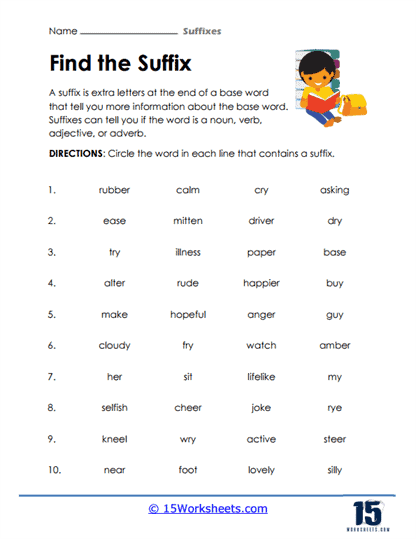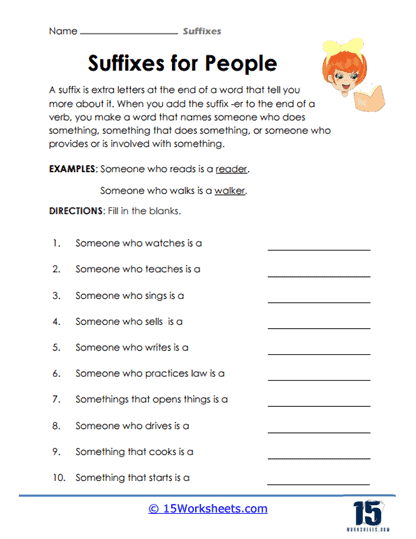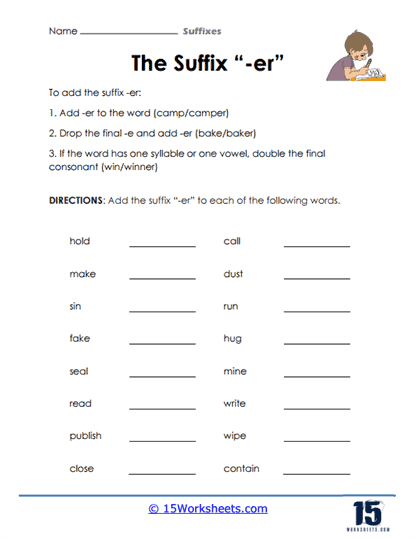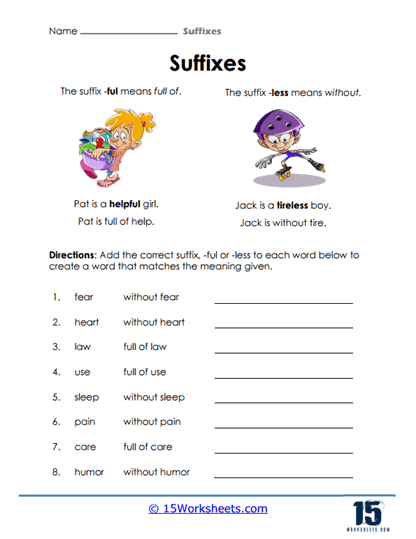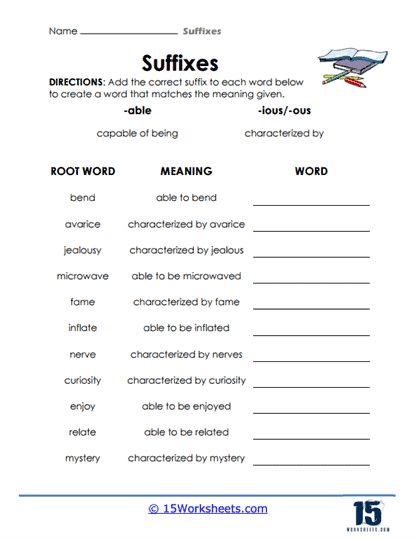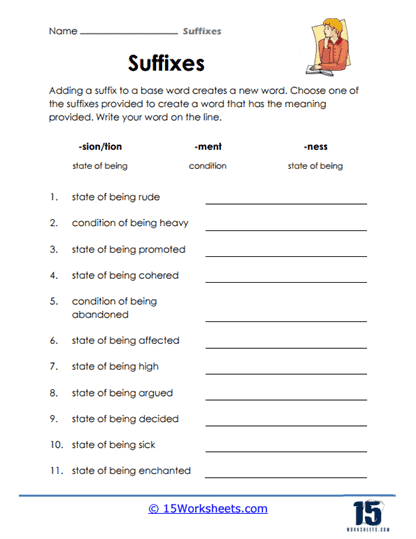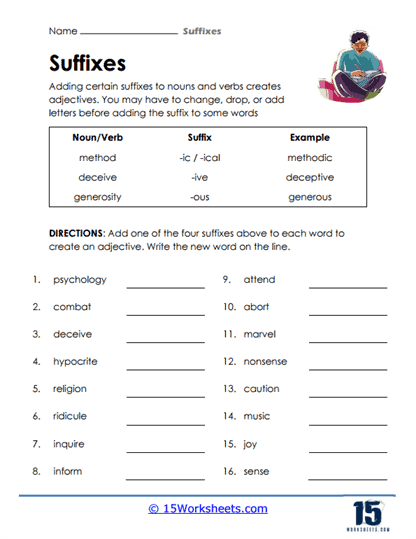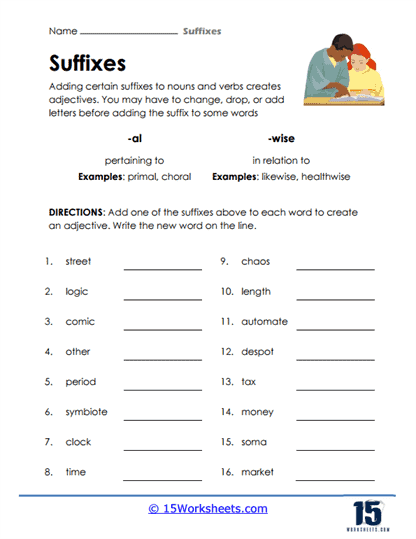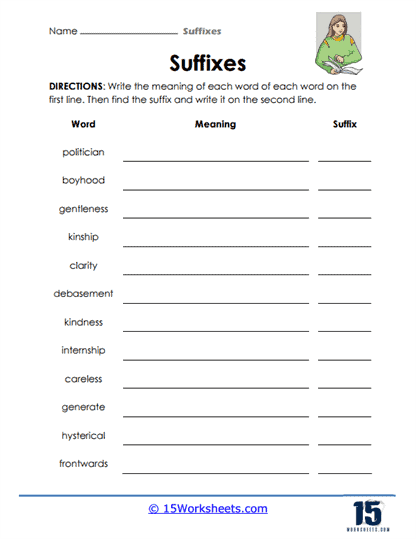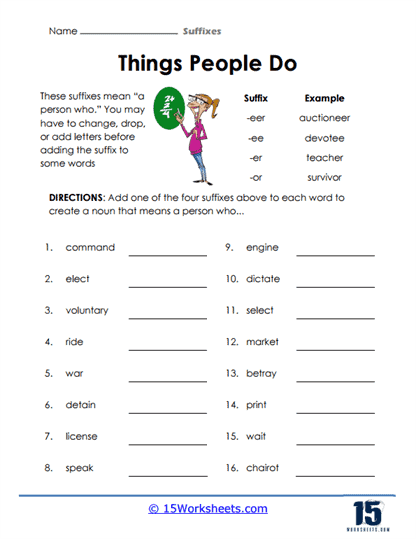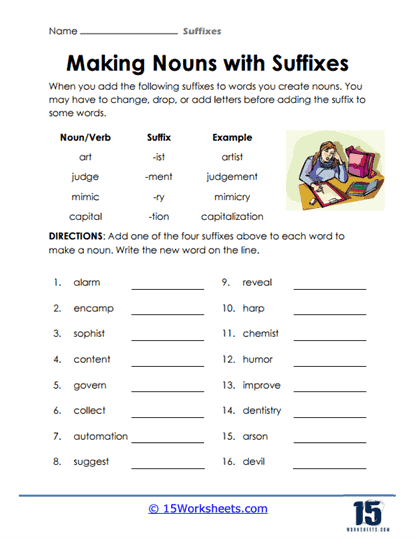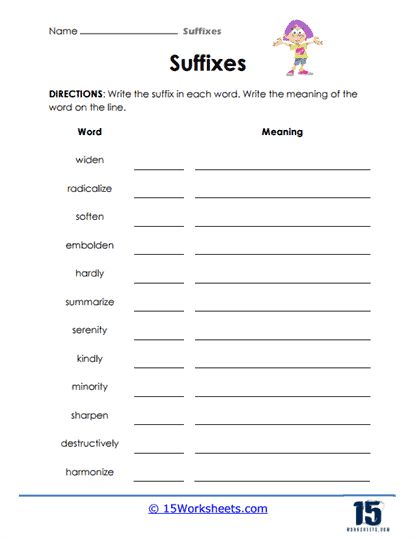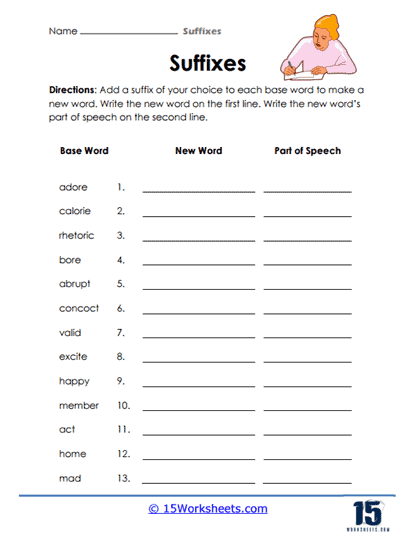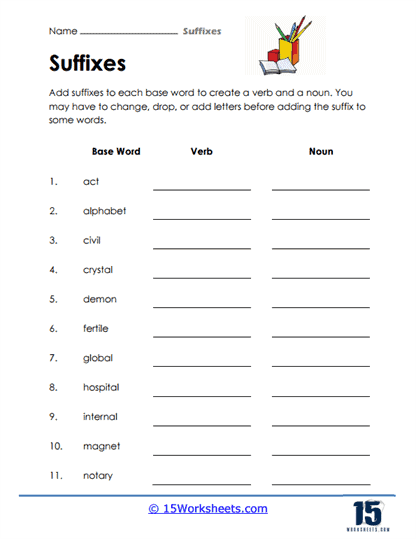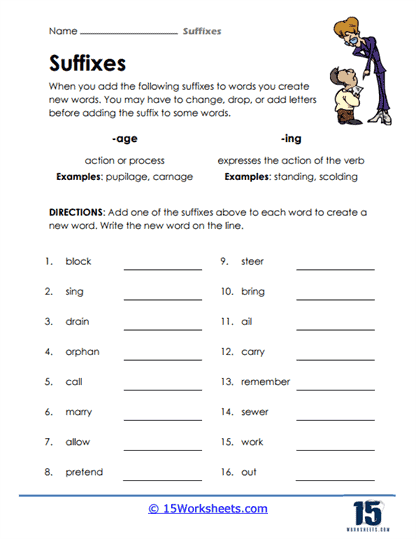Suffixes Worksheets
All About These 15 Worksheets
This collection of Suffixes worksheets can help students to understand how suffixes are used to modify the meaning of words in English. A suffix is a group of letters that is added to the end of a word to change its meaning or create a new word.
These worksheets include a range of exercises such as fill-in-the-blank exercises, short writing prompts, and word-building activities. Through these worksheets, students will:
- Identify words that contain a suffix;
- Expand their vocabulary on words with suffixes;
- Understand how suffixes, when added to words, can change their meaning and the context of the sentence they’re used in;
- And be familiar with how suffixes can transform a word to become a different part of speech in a sentence.
By providing students with a variety of exercises and prompts, these worksheets can help students to understand how suffixes are used in English and enhance their reading, writing, and communication skills. It is important to note that a strong understanding of suffixes can improve students’ vocabulary, reading comprehension, and overall language proficiency.
What are Suffixes and how to use them
In English grammar, a suffix is a group of letters that are added to the end of a word to change its meaning or form a new word. Suffixes can be added to verbs, nouns, and adjectives, and can change the word’s tense, part of speech, or meaning. To give students a jumpstart on this topic, teachers can share these common suffixes and their meanings:
- -er: Added to a verb to create a noun meaning “a person or thing that performs the action”. Example: swimmer (a person who swims)
- -able/-ible: Added to a verb or noun to form an adjective meaning “capable of” or “worthy of”. Example: comfortable (able to provide comfort)
- -ly: Added to an adjective to create an adverb that describes how something is done. Example: quickly (in a quick manner)
- -ment: Added to a verb to create a noun meaning “the process of” or “the result of”. Example: improvement (the process of improving)
- -ful: Added to a noun to create an adjective meaning “full of” or “having the quality of”. Example: cheerful (full of cheer)
- -ness: Added to an adjective to create a noun meaning “the state of being” or “the quality of”. Example: happiness (the state of being happy)
Understanding suffixes can help learners to understand the meanings of unfamiliar words and build their vocabulary. It can also help them to form new words and enhance their writing and communication skills.

